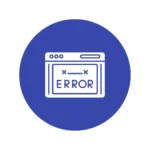As the name suggests, a Savings Bank Account is a type of account meant for saving money.
It’s an interest-bearing account. The interest rate ranges from 3 to 5 percent, depending on the bank or financial institution.
As of now, the State Bank of India is giving 2.7 percent per annum. Few other banks offer rates up to 5 percent.
Savings bank accounts are meant for saving money, and the number of transactions that you can do with them is limited. If your transaction goes beyond the limit charges may apply.
The charges are applicable to both offline and online transactions. Some banks, such as SBI waive charges on online transactions- Basically, transactions done on Internet banking, UPI and ATM.
But the catch is that when you do manual transactions at ATMs and branches, ATM transaction charges and fees may apply.
For example, if you deposit cash at a cash deposit machine, the bank may charge you ₹25 to ₹50 per transaction. Likewise, if you use other banks’ ATMs to withdraw cash, that is charged too.
Cheque leaves are free to use to some extent annually, beyond that, banks will charge you ₹3 to ₹10 per cheque leaf.
You can initiate NEFT/RTGS through your savings bank account, but it’s not free. There is a notional commission levied depending on the amount of the transaction. This commission is shared between the RBI and the particular bank.
For SBI account holders, NEFT and RTGS transactions done through online mode are waived off charges.
Types Of Savings Bank Accounts.
There are many types of Savings accounts. Banks offer different names, but the product specifics are more or less the same. Below are some of the types of Savings Bank accounts you would find in Indian Banks.
Zero Balance Savings Account.
A zero-balance account can be a Basic Savings Bank account or Jan Dhan Yojana Account. These accounts can be opened by daily wage earners, farmers, and other people who fall under the unorganised sector.
The account has a number of limitations as it is designed in such a way. You cannot do transactions more than 4 times in a month. It includes both deposits and cash withdrawals. Chequebook is not available.
The transaction can be done only at the home branch. You do not get the facility of payable at par. Since it’s without a chequebook, you get to carry your passbook to encash money over the counter.
Though, if you use a Rupay ATM card, you might use it to withdraw and deposit cash in the ATM.
Salary Account
An account specified for salaried persons. A person who works in the State government, Central Government, Universities and other Corporates can have this account. It includes defence personnel too.
It is called Corporate Salary Package Account. The account is loaded with features and offers. One can get the maximum benefits of owning a savings bank account through this product.
Numerous facilities such as ATM, Internet Banking, SMS alerts, Chequebooks, DD purchases, and NEFT/RTGS transactions are offered free of course. No minimum balance maintenance is required-MAB is waived in these accounts.
Savings Joint Account
Savings Bank Account can be opened in a joint name too. Account operation can be chosen as jointly or any other mandate. The rest features are the same as normal savings bank accounts.
A joint account can be opened with a spouse and other family members. Non-personal joint accounts such as Societies Account, Joint liabilities Group and credit link schemes such as Self Help Group accounts may open as a savings bank account.
Senior citizen savings account
An account meant for Senior Citizens. It is a government back savings scheme that gives a higher rate of interest than the SB rate. Its interest rate is even better than the counterpart Fixed Deposits. it is called Senior Citizen Savings Scheme-SCSS in short.
If you are eligible for this account, you can invest up to ₹30 lakhs in it. The account is taxable as any other deposit scheme.
The benefit of this account is- the investor gets a regular source of income. It is 100 percent secure, there is no exposure to market rate risk. However, the interest pay-out will be a post-taxed amount.
Minor accounts
Minors below the age of 18 can open these accounts. In the State Bank of India, you may find these accounts as Pehla Kadam and Pehli Udan accounts.
Minor accounts have limited transactions. All services such as ATM cards, Internet Banking, and Mobile Banking can be done with a limited amount.
As per the Reserve Bank’s guidelines, there is a limit to how much you can deposit and maintain a balance in a minor account. It is ₹2 lakhs only.
Pension accounts
An account for pensioners. These accounts are just the same as a normal savings bank account. Only the account operator is a pensioner. A pension Account can be opened singly or joint with the spouse.
Conversion of a normal savings bank account to a pension account is possible. What you need is to contact your bank and request the same.
Where To Open A Savings Bank Account?
You can visit any bank to open a savings bank account.
Popular banks such as State Bank of India, ICICI, HDFC bank, Punjab and Sind Bank, Bank of Baroda and others provide the services.
In fact, you have a range of choices where you can open and maintain savings bank accounts. Or you can have multiple savings account in different banks.
Moreover, at present, online account opening is quite popular among banks. You can open it at your convenience if you have internet access.
Who Can Open It?
Anyone can open a savings bank account. From a minor of a month old to an adult person.
Although, each bank has its restriction on the opening of any kind of account to a specific person, such as a person of insanity, a terrorist group listed by the UN, money laundering activities, criminals etc.
Required Documents
When you want to open an account with the bank, there are certain criteria you have to meet. This includes abiding by the terms and conditions of the bank where you want to open and maintain your account.
KYC ( Know Your Customer) documents are required to establish your identification and your whereabouts.
From time to time, KYC or OVD (Officially valid documents) are updated by RBI (Reserve Bank of India).
At present, the bank accepts the following documents for opening a savings bank account.
- Aadhar card
- Passport
- Voter ID card
- Driving licence
- NREGA job card
- Letter issued by national population registrar
- 2 passport-size photographs
- A PAN card or form 60 is mandatory
Form 60 is a declaration form, in case you don’t possess a PAN card you have to declare through Form 60 whether your fund is taxable or non-taxable.
Also, read about the business’s current accounts.
KYC Updation Period
In India, KYC guidelines are given by the Reserve Bank of India. As per the guidelines, customers are classified under three broad categories. Low risk, medium risk and high risk.
The inherent risk of account classification directly impacts the periodicity of KYC updation.
For the low-risk category, it is after every 10 years, the medium-risk category has to update after every 3 years and the high-risk category after every 2 years.
The catch here is that if you don’t change your address and the ID that you submitted earlier than just by mare declaration bank may consider your KYC as updated.
Add-on Facilities
There are many facilities for savings bank accounts. All kinds of products available in the bank start from opening a savings bank account.
If you want to avail of loans, either a savings or current account is required. What it implies is that your relationship with the bank starts with owning an account.
Then you inculcate the habits of savings and later on, you go for either investment of your funds or availing loans and advances.
Specific facilities you instantly get when you open a savings account are as follows:
- ATM card
- Internet banking
- Chequebook
- Phone banking
- SMS alert
- You can open savings accounts jointly
The flexibility of a savings account is that you can open it jointly with your spouse or whomever you would like to make a joint account with.
Documentation is the same as a single account. The only thing you have to do is declare the mode of operation of the account.
It’s provided in the account form, you will see the option to tick in the form as
- Either or survivor
- Former or survivor
- Jointly
In the “either or survivor” mandate, either of you can operate the account with a single signatory. In “former or survivor” the former will operate the account. Only in the death of the former, the survivor will continue operating the account and in “jointly” all the account operators will sign and do transactions jointly.
How Long Does It Take?
As we are now in the digital world, it’s just a click away from getting your account number. Normally it doesn’t take more than a few minutes, provided you produce all the KYC needed for opening.
You can initiate it through online mode as well. For this, you have to access their official website. Go to the personal banking section, there you will find links for online account opening. Or you can google this “Online account opening” and you will get links to almost all the banks.
So, either way, you can go forward and try out owning a savings account.
Own a savings account, save your hard-earned money and get the benefit of financial freedom
Having an account of your own is important. As we move toward the digital world, everything is going to be different. There will be times when nobody carries hard cash.
The financial world is evolving toward digital products as we speak. Name the banks that are not inclined toward it.
Learn as much as you can about the financial matter, as you have devoted yourself to other things.
So, guys, what are you waiting for? Choose which bank you want to be a part of. Go get yourself an account number at your favorite bank.







